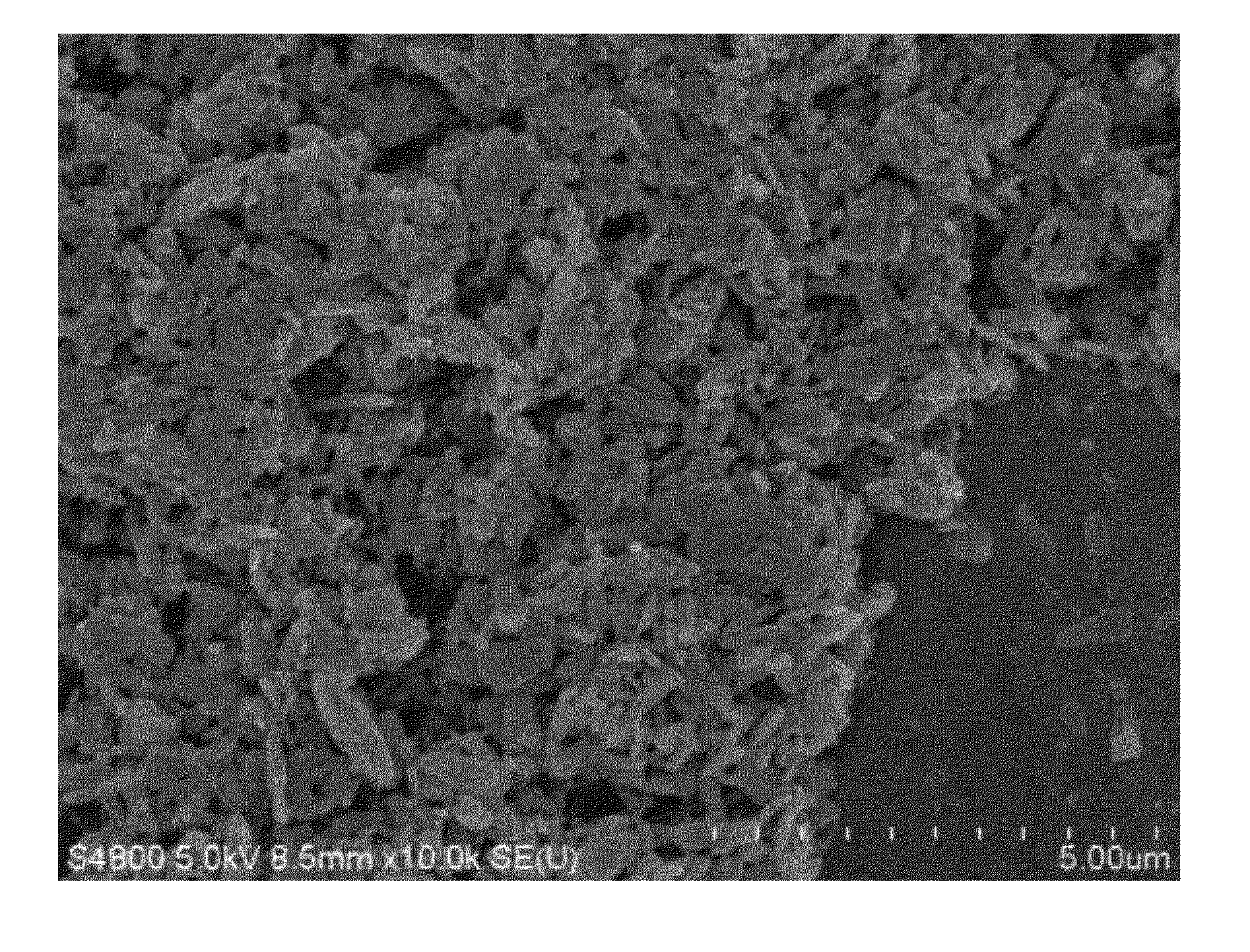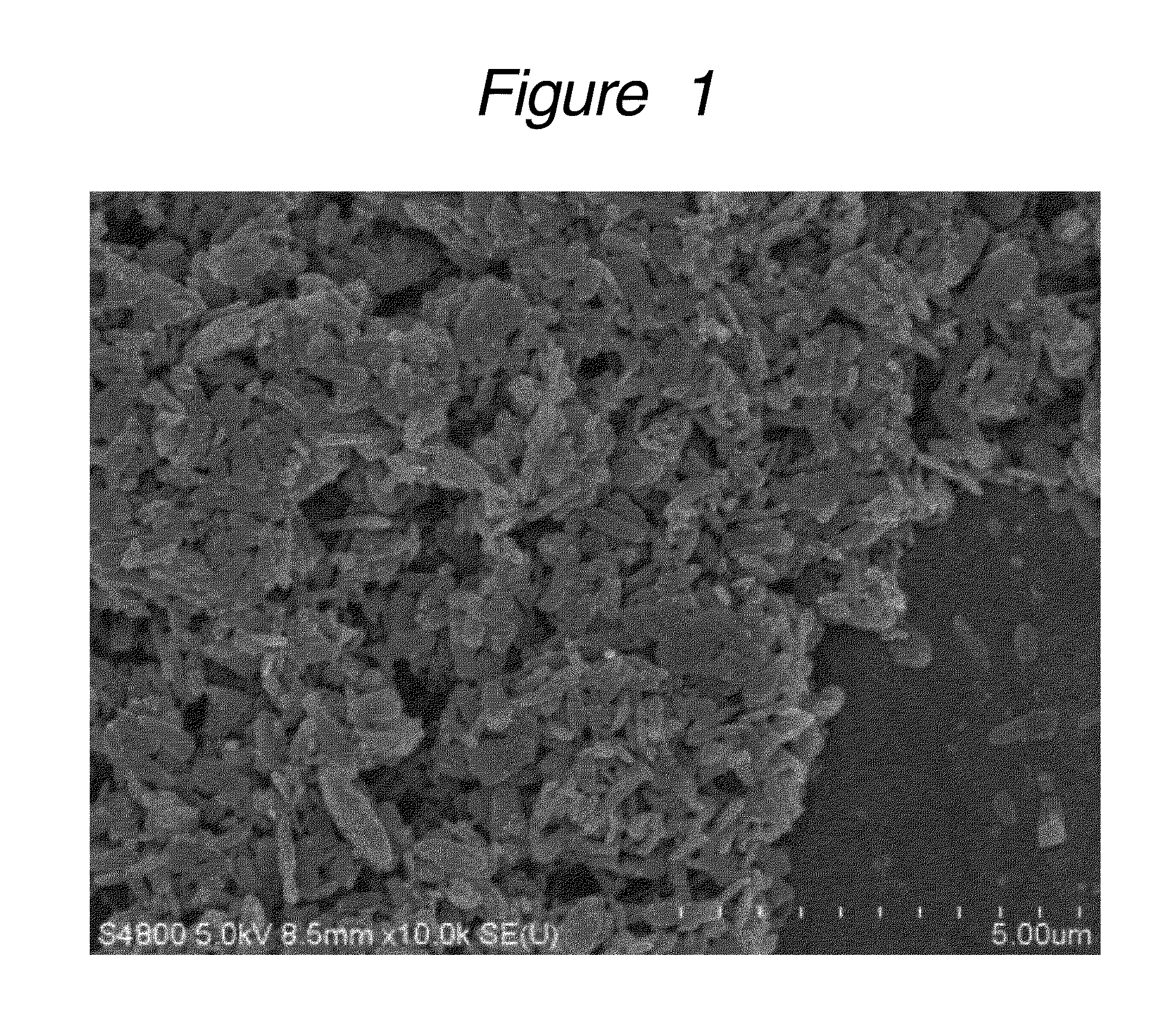Aqueous dispersion of fine resin particles, method for producing aqueous dispersion of fine resin particles, and method for producing toner particles
a technology of fine resin particles and aqueous dispersion, which is applied in the field of fine resin particles aqueous dispersion, method for producing fine resin particles, and method for producing toner particles, can solve the problems of steric limitation, time and labor for mass production, and difficulty in processing, etc., and achieve excellent storage stability and processability.
- Summary
- Abstract
- Description
- Claims
- Application Information
AI Technical Summary
Benefits of technology
Problems solved by technology
Method used
Image
Examples
example 1
[0120]A dispersing medium was prepared by dissolving 0.1 parts by mass of an anionic surfactant (NEOGEN RK, manufactured by Dai-ichi Kogyo Seiyaku Co., Ltd.) and 2.1 parts by mass of a basic substance N,N-dimethylamino ethanol in 100 parts by mass of an ion-exchanged water (aqueous medium). This dispersing medium was taken into a 350-mL stainless steel pressure vessel with a round bottom, and then, as an acid group-containing resin, 100 parts by mass of pulverized (particle diameter of 1 to 2 mm) “polyester resin A” [composition (mol ratio) of polyoxypropylene (2.2)-2,2-bis(4-hydroxyphenyl)propane:polyoxyethylene (2.0)-2,2-bis(4-hydroxyphenyl)propane:terephtahlic acid:fumaric acid:trimellitic acid=25:25:26:20:4, Mn=3,500, Mw=10,300, Mp=8,700, Mw / Mn=2.9, Tm=96° C., Tg=56° C., and acid value=11 mgKOH / g] was added to the dispersing medium and mixed.
[0121]Then, a high-speed shear stress emulsifier crearmix (CLM-2.2S, manufactured by M Technique Co., Ltd.) was connected to the stainless ...
example 2
[0125]A dispersing medium was prepared by dissolving 0.02 parts by mass of a nonionic surfactant (NOIGEN EA-137, manufactured by Dai-ichi Kogyo Seiyaku Co., Ltd.) and 2.1 parts by mass of a basic substance N,N-dimethylamino ethanol in 100 parts by mass of an ion-exchanged water (aqueous medium). This dispersing medium was taken into a 350-mL stainless steel pressure vessel with a round bottom, and then 100 parts by mass of pulverized “polyester resin A” (particle diameter of 1 to 2 mm) was added to the dispersing medium and mixed.
[0126]Thereafter, the subsequent operation was followed in a similar manner to that of Example 1 except that the cooling rate was changed to 0.5° C. / minute to obtain an aqueous dispersion 2 of fine resin particles.
[0127]Production conditions as mentioned above, physical properties of the fine resin particles, and evaluation results are shown in Table 1.
example 3
[0128]A dispersing medium was prepared by dissolving 0.02 parts by mass of an anionic surfactant (NEOGEN SC, manufactured by Dai-ichi Kogyo Seiyaku Co., Ltd.) and 2.1 parts by mass of a basic substance N,N-dimethylamino ethanol in 100 parts by mass of an ion-exchanged water (aqueous medium). This dispersing medium was taken into a 350-mL stainless steel pressure vessel with a round bottom, and then 100 parts by mass of pulverized “polyester resin A” (particle diameter of 1 to 2 mm) was added to the dispersing medium and mixed.
[0129]Thereafter, the subsequent operation was followed in a similar manner to that of Example 1 except that the cooling rate was changed to 0.5° C. / minute to obtain an aqueous dispersion 3 of fine resin particles.
[0130]Production conditions as mentioned above, physical properties of the fine resin particles, and evaluation results are shown in Table 1.
PUM
| Property | Measurement | Unit |
|---|---|---|
| particle diameter | aaaaa | aaaaa |
| particle diameter | aaaaa | aaaaa |
| particle diameter | aaaaa | aaaaa |
Abstract
Description
Claims
Application Information
 Login to View More
Login to View More - R&D
- Intellectual Property
- Life Sciences
- Materials
- Tech Scout
- Unparalleled Data Quality
- Higher Quality Content
- 60% Fewer Hallucinations
Browse by: Latest US Patents, China's latest patents, Technical Efficacy Thesaurus, Application Domain, Technology Topic, Popular Technical Reports.
© 2025 PatSnap. All rights reserved.Legal|Privacy policy|Modern Slavery Act Transparency Statement|Sitemap|About US| Contact US: help@patsnap.com


